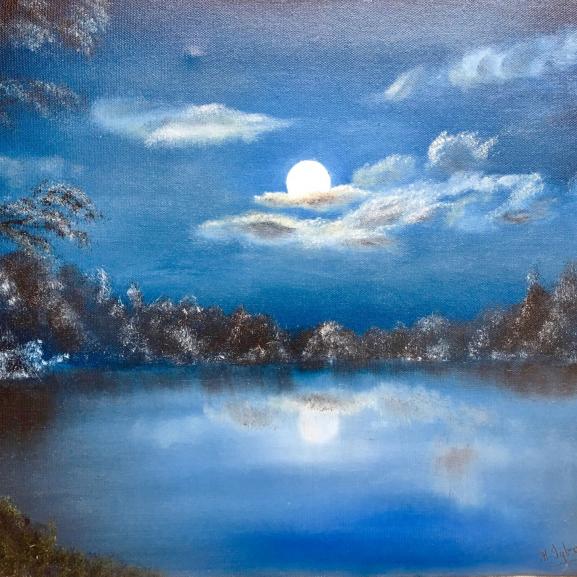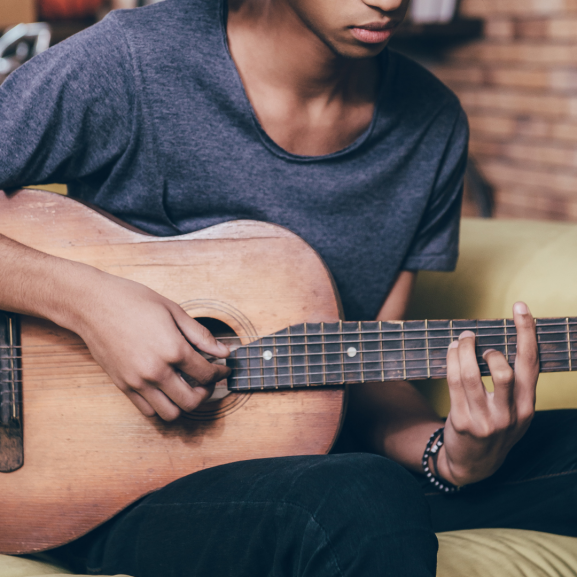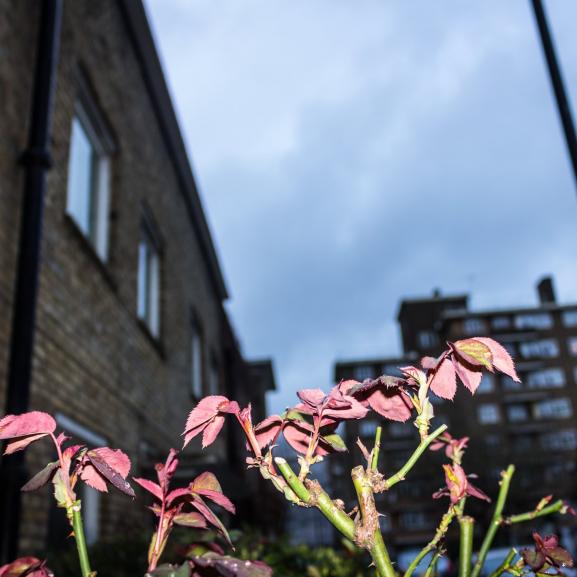Seeking a safe space through art
Dr Emma Rose and Kirsten Lamb describe how participating in art workshops can support torture survivors to recover from trauma.
By Dr Emma Rose & Kristen Lamb, therapist at Freedom from Torture
The Art of Recovery team from Lancaster University joined with Freedom from Torture to explore whether a participatory art project could help torture survivor to evoke positive memories and overcome their social isolation.
Working from Freedom from Torture’s North West centre in Manchester, 14 clients from five countries took part in four workshops over a six week period. None were involved in any form of group therapy and all said that they felt isolated and alone, and found it difficult to communicate their hopes and fears. Would creating artworks aid their recovery from trauma?
Clients were asked to create scenes where they felt safe. This might be from their home country, or on their journey or from their present life. It could be real or imaginary. They could draw or paint or create collages, from materials such as wool, felt, stones and feathers – whatever they felt happy and comfortable with. They could talk to each other or through interpreters and therapists, or stay silent.
Clients were asked to create scenes where they felt safe. This might be from their home country, or on their journey or from their present life. It could be real or imaginary. They could draw or paint or create collages, from materials such as wool, felt, stones and feathers – whatever they felt happy and comfortable with. They could talk to each other or through interpreters and therapists, or stay silent.
Everyone looked back to their home country for happy memories. They depicted the beauty of the countryside and their lives before the nightmare of their torture and flight. Some looked at their current lives, at what made them feel happy, despite their problems.
Mahamadou comes from the Democratic Republic of Congo. His first paintings depicted places he remembered with affection and regret – the pickup lorry he can no longer drive, the stall selling fresh bananas he can no longer eat, the lively city he can no longer visit. Later, he depicted places in his current life; a local church where he finds solace in prayer; a football pitch where he enjoys a kickabout.
Everyone looked back to their home country for happy memories. They depicted the beauty of the countryside and their lives before the nightmare of their torture and flight. Some looked at their current lives, at what made them feel happy, despite their problems.
Tharindu had been a fisherman in his native Sri Lanka. He drew a picture of his boat, complete with crew sailing on a calm blue sea. He explained:
"This is a place in Vanni in Sri Lanka where I was a fisherman, fishing with a group of men. It is helpful to remember and I miss this place."
As he painted more scenes he said:
"These places are not in my imagination, but the place where I lived with my parents and five sisters. I am remembering how we were a happy family. I have heard from my wife that the place has now been destroyed by the Sri Lankan army."
Fahad from Iran, painted a restaurant in the lee of a mountain facing a lake. The sky is dark and small twinkly lights illuminate the way to the summit. Fahad said:
"I have been to this place in the past and going there always makes me feel happy. Remembering it makes me feel sad and happy."
Some participants painted people as well as places. Divine, who comes from the Democratic Republic of Congo, depicted a busy dispensary, filled with people. A pregnant women lies on a bed, surrounded by equipment, another person, perhaps a doctor, sits in a chair, while outside there are groups of women and children.
Divine also painted another familiar scene from her homeland – churchgoing with children attending the Sunday school in the smaller annex to the church. The buildings are strong and sturdy – literally a safe space.
Some participants choose to make artworks of objects. Both Divine and her compatriot Aliza made images of cassava grinding pots, using paint with feathers and wool.
Later, Aliza made a bright red painting of her hand. She explained:
"I paint my hand. My hand is special. When I was five, I burnt my hand. It is special because I cook nice food with my hand for my family. I cook cassava, mixed with palm oil."
For Aliza her hand is a positive memory, linking her past in Africa with her life in England.
Participants told the research team that creating artwork had been positive and helpful for them. Mahamadou said that it was:
"Very motivating, because we exchange ideas."
Divine summed up:
"It is taking my memory back. You give me a space to think for myself."
Just as important was the way the project helped to overcome social isolation. For Fahad:
"It helped me feel confident and comfortable among others… It also helped me to socialise and mix with others."
Like many others, Aliza wanted the programme to continue.
"We would like more, it is good for us. I make art about my country, my home, my city. I feel sad because of so many bad memories. But I feel good to do art together with other people."
*NB participants names have been changed
Dr Emma Rose is a Professor with the Lancaster Institute for the Contemporary Arts at Lancaster University and Kirsten Lamb is a therapist with Freedom from Torture North West Centre in Manchester.






